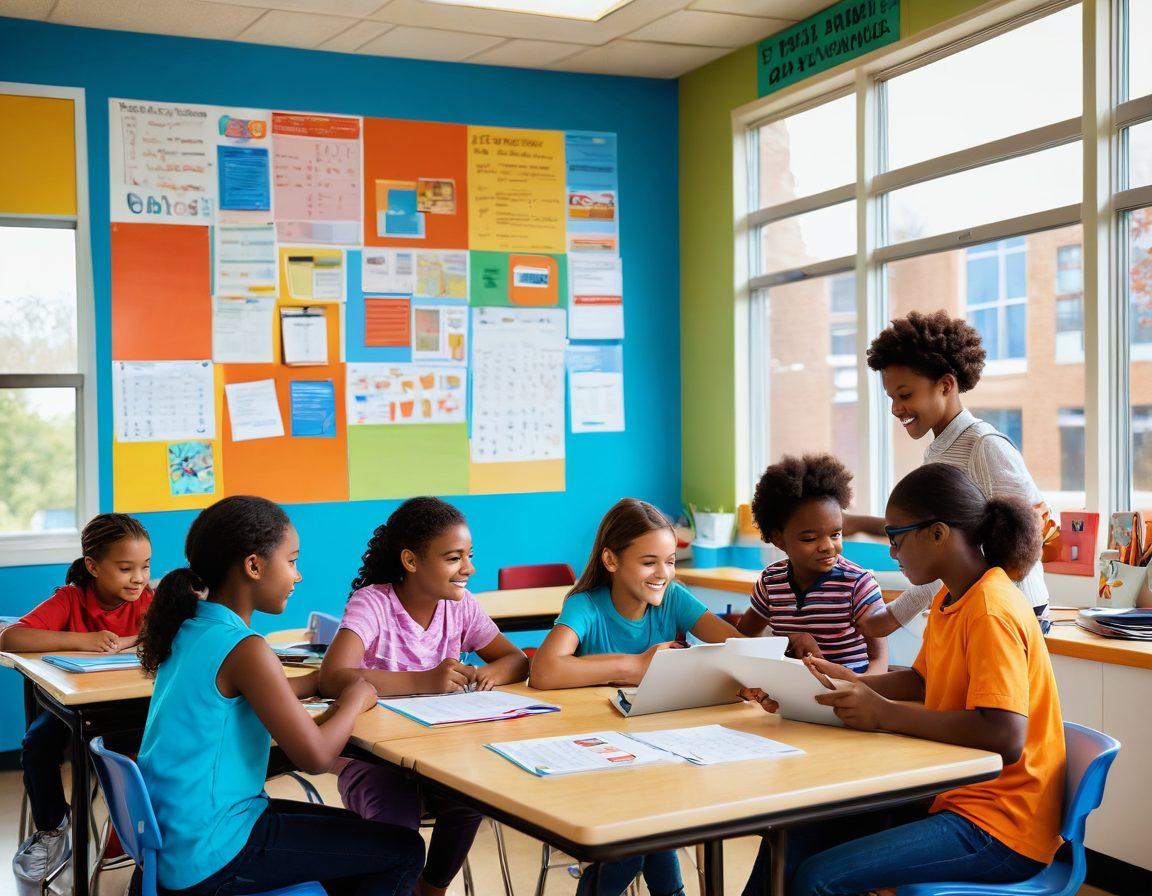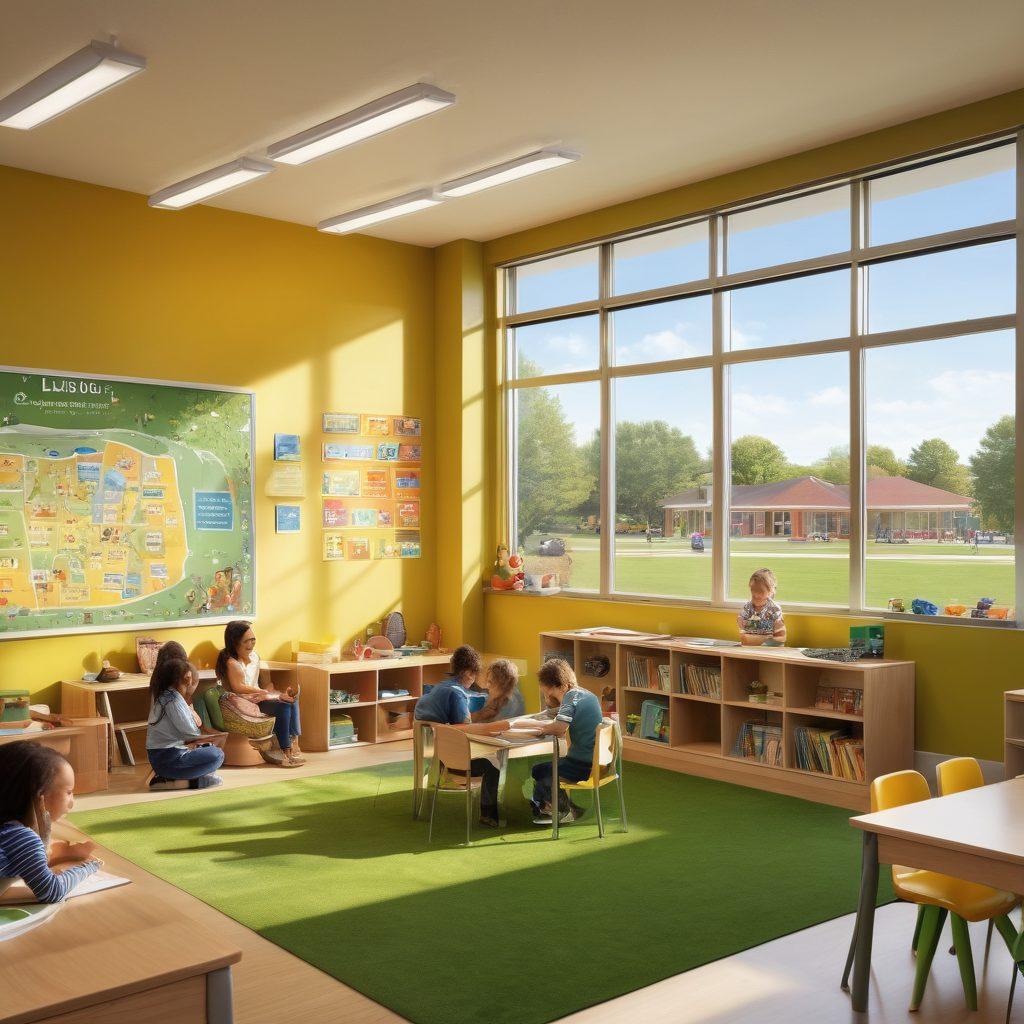Creating a Joyful Learning Environment: Secrets to Student Satisfaction and Success in K-12 Education
Imagine stepping into a classroom where laughter fills the air, students are eagerly collaborating, and the energy is palpable. This is the magic of a joyful learning environment, and it’s more than just a feel-good atmosphere—it's a key driver of student success in K-12 education. But how do we create such an environment? What methods can educators employ to enhance student satisfaction and ultimately, their academic performance? Let’s delve into this engaging journey to unveil the secrets of fostering happiness within our educational institutions.
Joyful learning goes hand in hand with contentment; when students are happy, learning becomes a pleasant experience rather than a chore. Research shows that when students experience joy in learning, their cognitive development flourishes. So, how can educators craft that joyous atmosphere? Simple yet effective teaching methods such as incorporating humor, hands-on activities, and interactive discussions can elevate a mundane academic curriculum into something memorable. Remember, as the famous philosopher Aristotle said, 'Educating the mind without educating the heart is no education at all.'
The role of the school community is another essential aspect. When teachers, parents, and even students collaborate, the circle of support becomes powerful. Parents who are engaged in their child’s education contribute to a positive learning environment. Their participation can range from volunteering for extracurricular activities to attending parent-teacher conferences. They may ask themselves: 'What can I do to foster happiness at school?' By nurturing relationships with educators, parents can help facilitate a space where youth education thrives and students feel valued and supported.
Moreover, the significance of social development cannot be overstated. Schools that encourage collaboration and interaction among peers naturally cultivate friendships, reducing feelings of isolation and anxiety. When students engage in group projects or team-based extracurricular activities, they are not just working on their assignments; they're building a network of support and shared joy. After all, it’s often said that the most valuable lesson learned in school is not just academic knowledge but the joy of connecting with others. How can we ensure every student feels included and part of this vibrant school community?
Lastly, let’s think about the long-term impact of fostering a joyful learning environment in K-12 education. Happy learners are more likely to embrace challenges and show resilience when faced with obstacles. This kind of environment goes beyond grades; it shapes well-rounded individuals who are prepared for life's diverse pathways. Therefore, educators and educational institutions must continue to prioritize happiness, offering supportive childcare and impactful teaching methods that encompass emotional well-being alongside academic growth. The result? Thriving students who carry their joy into the next chapter of life. So, what steps will you take today to make your learning environment more joyful?
The Heart of Education: Building Contentment in K-12 Classrooms
Imagine stepping into a classroom where the air is filled with laughter, curiosity, and a palpable sense of joy. This is not just a dream but a reality that educational institutions can create when they prioritize a joyful learning environment. In K-12 education, the heart of education beats strongest when students feel content and engaged. The quest for student satisfaction begins with understanding that a pleasant atmosphere not only enhances academic learning but also nurtures child development and cognitive growth. So, what does it take to build a classroom that fosters such contentment and success?
Building a joyful learning environment involves more than simply adding colorful posters or fun decorations. It's about cultivating a dynamic school community where teaching methods are tailored to meet the diverse needs of every learner. Educators play a pivotal role in this process. They must employ engaging pedagogies that not only make lessons enjoyable but also resonate with the students' interests. The passion that educators display is contagious; when they bring joy and enthusiasm into the classroom, it sets the tone for student learning. It's that infectious spirit that makes young minds eager to discover and explore.
Parent engagement is another crucial element in creating a joyful learning environment. When parents are actively involved in the educational journey, it strengthens the connection between home and school. Parents serve not only as supporters of their child’s academic curriculum but as partners in fostering a positive atmosphere within the classroom. You might ask yourself: how can I involve parents more effectively in the school community? Whether it’s through volunteering for extracurricular activities or participating in engaging events, collaboration between educators and parents cultivates a richer educational experience for youths.
Furthermore, it’s essential to recognize the significance of social development alongside academic achievement. Extracurricular activities, teamwork, and collaborative projects give students a chance to hone their interpersonal skills while also making lasting friendships. These experiences contribute to a sense of belonging, which is critical in developing a pleasant learning environment. By integrating social aspects into the curriculum, we’re not only focusing on academic success but also on nurturing emotionally healthy and socially responsible young individuals.
In conclusion, the pursuit of a joyful learning environment in K-12 education is one built on commitment—from educators, parents, and the school community. By focusing on contentment, we help students thrive in both their academic and personal lives. So let’s ask ourselves: how can we contribute to creating a classroom that is not just a place of learning, but a hub of joy and satisfaction? Whether you’re an educator, parent, or community member, the responsibility lies with us all to ensure that every child feels valued and excited about their educational journey. The heart of education truly begins with joy—let's nurture it together.
Engaging Students and Parents: The Keys to a Pleasant Educational Journey
Imagine walking into a classroom that feels more like a home than a school. The walls are adorned with student artwork, laughter echoes in the hallways, and parents are treated as partners in their children's education. In today’s educational landscape, particularly in K-12 education, creating a joyful learning environment is paramount. It’s not just about textbooks and grades; it’s about cultivating a space where students feel satisfied, supported, and excited about their journey of child development. So, how do we transform traditional academic institutions into stimulating hubs of education that foster cognitive and social development?
First and foremost, engaging students and parents is essential to building a pleasant educational community. Learning doesn’t stop when the school day ends; it continues at home with families. When educators create channels for parent engagement, they open the door to collaborative teaching methods and a richer academic curriculum. Remember the last time you shared an exciting story from your school day with your parents? That sense of shared joy can significantly boost a child's motivation to learn and participate. The question then becomes: how can we strengthen those ties to enhance student learning?
One powerful way is through extracurricular activities that resonate with students' interests. Whether it’s a robotics club, a drama production, or a community service project, these activities offer children the opportunity to explore their passions. They also encourage peer connections, reinforcing social development. As an educator, consider asking yourself: what unique interests do my students have, and how can I encourage them to shine outside the academic curriculum? Creating an environment where every student’s voice is heard can elevate their experience from mediocre to exhilarating.
Additionally, the pedagogical approach adopted by educators plays a significant role in fostering a joyful learning environment. Engaging teaching methods that incorporate creativity and fun can transform mundane lessons into memorable experiences. This encompasses not just the content being delivered, but the way it's presented. Think about it – when was the last time a lesson made you gasp with excitement? That’s the essence of joyful teaching! Why not consider integrating games, discussions, and hands-on projects that captivate students and keep the spark alive in their educational journeys?
Ultimately, the key to creating a joyful learning experience lies in recognizing that education is a partnership. Both students and parents play a critical role in shaping a positive school community. From encouraging feedback loops to promoting a spirit of togetherness, every effort counts in establishing a rewarding environment, steering clear of the anxiety associated with traditional schooling. So, let’s ask ourselves: in what small ways can we contribute to a culture of joy and satisfaction in youth education? Always remember, when we unite as a community, the impact on child development and student success can be profound.


